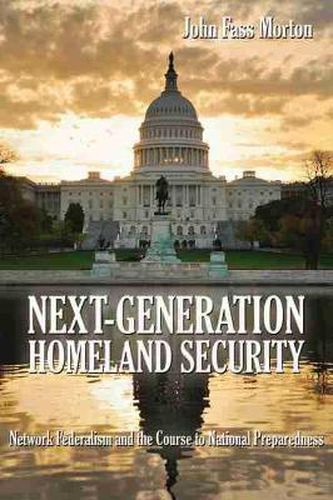Next-Generation Homeland Security: Network Federalism and the Course to National Preparedness
John Fass Morton

Next-Generation Homeland Security: Network Federalism and the Course to National Preparedness
John Fass Morton
Security governance in the second decade of the 21st century is ill-serving the American people. Left uncorrected, civic life and national continuity will remain increasingly at risk. At stake well beyond America’s shores is the stability and future direction of an international political and economic system dependent on robust and continued U.S. engagement.
Outdated hierarchical, industrial structures and processes configured in 1947 for the Cold War no longer provide for the security and resilience of the homeland. Security governance in this post-industrial, digital age of complex interdependencies must transform to anticipate and if necessary manage a range of cascading catastrophic effects, whether wrought by asymmetric adversaries or technological or natural disasters. Security structures and processes that perpetuate a 20th century, top-down, federal-centric governance model offer Americans no more than a single point-of-failure. The strategic environment has changed; the system has not. Changes in policy alone will not bring resolution. U.S. security governance today requires a means to begin the structural and process transformation into what this book calls Network Federalism.
Charting the origins and development of borders-out security governance into and through the American Century, the book establishes how an expanding techno-industrial base enabled American hegemony. Turning to the homeland, it introduces a borders-in narrative-the convergence of the functional disciplines of emergency management, civil defence, resource mobilisation and counterterrorism into what is now called homeland security. For both policymakers and students a seminal work in the yet-to-be-established homeland security canon, this book records the political dynamics behind the creation of the Department of Homeland Security, the impact of Hurricane Katrina and the ongoing development of what is now called the Homeland Security Enterprise.
The work makes the case that national security governance has heretofore been one-dimensional, involving horizontal interagency structures and processes at the Federal level. Yet homeland security in this federal republic has a second dimension that is vertical, intergovernmental, involving sovereign states and local governments whose personnel are not in the President’s chain of command. In the strategic environment of the post-industrial 21st century, states thus have a co-equal role in strategy and policy development, resourcing and operational execution to perform security and resilience missions.
This book argues that only a Network Federal governance will provide unity of effort to mature the Homeland Security Enterprise. The places to start implementing network federal mechanisms are in the ten FEMA regions. To that end, it recommends establishment of Regional Preparedness Staffs, composed of Federal, state and local personnel serving as co-equals on Intergovernmental Personnel Act (IPA) rotational assignments. These IPAs would form the basis of an intergovernmental and interdisciplinary homeland security professional cadre to build a collaborative national preparedness culture. As facilitators of regional unity of effort with regard to prioritisation of risk, planning, resourcing and operational execution, these Regional Preparedness Staffs would provide the Nation with decentralised network nodes enabling security and resilience in this 21st century post-industrial strategic environment.
This item is not currently in-stock. It can be ordered online and is expected to ship in approx 4 weeks
Our stock data is updated periodically, and availability may change throughout the day for in-demand items. Please call the relevant shop for the most current stock information. Prices are subject to change without notice.
Sign in or become a Readings Member to add this title to a wishlist.


